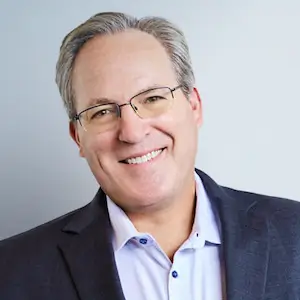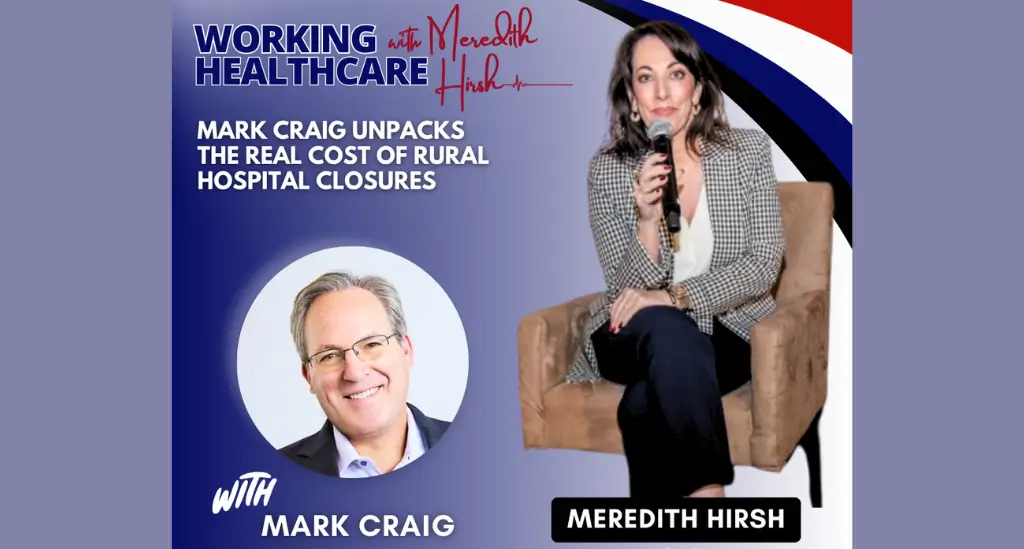Over the last few weeks, Dr. Mehmet Oz, the newly confirmed head of CMS, has resurrected and repeated an old talking point: Too many Medicaid dollars are going to “able-bodied” adults.
It’s a familiar distraction. Politicians wag their fingers at low-income working people, single parents, and disabled patients trying to navigate one of the most confusing insurance systems on the planet. But they ignore the real beneficiaries of Medicaid in its current form: the private insurance corporations pocketing billions to manage it.
Let’s talk about who’s really working the system.
The Setup: How Insurers Get Paid to Say No

Most people don’t realize this, but traditional Medicaid – the public insurance program for low-income Americans – isn’t really run by the government anymore. Nationwide, over 73% of Medicaid enrollees are now in Medicaid Managed Care, where the government pays private insurers to manage care and reimburse providers.
This is the financial flow:
CMS (federal agency) sends taxpayer Medicaid money to states.
States contract with managed care organizations (MCOs) – companies like Centene, UnitedHealthcare, and Elevance.
These MCOs are paid a fixed amount per enrollee, regardless of how much care that person actually receives.
The less care the patient gets, the more the company profits.
That’s right. They make money when they don’t pay for care.
This pass-through structure creates a perverse incentive to keep people sick and suffering. And we see the damage playing out across the country every single day.
Real Abuse, Real Patients

In 2021, Centene agreed to pay more than $1 billion across several states for overcharging Medicaid programs. In Ohio, for example, Centene’s pharmacy middleman charged the state for drugs that were never dispensed. Of course, that was a calculated and wildly profitable strategy, not an innocent mistake.
Centene isn’t an outlier. Across the private Medicaid system, providers grapple with managed care organizations that prioritize profit over care: underpayments, denied claims, delaying or denying essential treatments, and draining public dollars through opaque subcontracting and pharmacy benefit arrangements.
Providers feel it every day, with rural facilities in particular bearing the brunt of this corporate greed. Across the country, hospitals have reduced or eliminated entire service lines just to stay afloat, despite the fact that they’re often the only available services for hundreds of miles. When a labor and delivery unit shuts down, for example, expectant parents are forced to drive hours in active labor or risk dangerous complications at home.
Jon Green, CEO of Taylor Health Care Group in Georgia, had to shutter his OB/GYN unit and, more recently, his ICU as a result of the delay and denial tactics that are standard with both Medicaid and Medicare Advantage corporate insurers. Plans were denying more than 50% of claims, even as supply costs jumped 300% and labor costs surged by 40%. “We pretty much lose money on every [insurance] payer that we have right now,” Green says.
Patients and their families feel it too.
Benji, a 10-year-old boy in Louisiana with severe autism, was thriving with intensive Applied Behavior Analysis (ABA) therapy. His doctors and therapists said the treatment was essential. But after UnitedHealthcare, through its Optum subsidiary, took over managing his Medicaid plan, they sharply dropped his allowable therapy hours. United didn’t dispute that ABA is the gold standard for treating autism – internal documents showed they knew it worked exceptionally well. But they also saw it as too expensive, and made a calculated decision to limit access purely to cut costs.
According to emails and internal documents, staff were instructed to ignore provider recommendations and follow blanket formulas instead. Benji’s mother, desperate to preserve his progress, had to quit her job and rearrange her entire family’s life around the reduced care. Without consistent therapy, Benji began to severely regress, and behaviors that had faded came roaring back. His case remains in legal limbo, while Benji and his entire family continue to suffer the consequences of United’s naked greed.
The Political Shell Game

So when Dr. Oz complains about “able-bodied” people on Medicaid, he’s missing the point, or more likely, deliberately avoiding it.
The truly able-bodied parties in this equation are the ones collecting billions in taxpayer money and turning care into a commodity. These companies aren’t the safety-net providers they pretend to be. They’re pass-through profiteers, backed by slick marketing and lobbyists who help them dodge meaningful oversight.
Managed care companies claim to reduce costs. But according to the Government Accountability Office, there’s limited evidence they actually improve outcomes. And in many states, oversight is so lax that tens of billions are simply handed over to these corporations. No questions asked, no proof of value, and no accountability.
Dr. Oz, now at the helm of Medicare and Medicaid, has himself invested millions in companies that directly profit from the programs he now oversees. Even if he fully divests, the policies he promotes still serve the same corporate interests and strengthen the very system that got him there.
And divestment isn’t the clean break it sounds like. He can still move his money into healthcare-heavy mutual funds or ETFs that rise and fall with the industry’s fortunes. He can set up a blind trust that keeps him technically uninformed, but financially aligned. And perhaps most importantly, he can continue shaping policies that benefit the sector as a whole – expanding privatized Medicaid, loosening oversight, and protecting the margins of the very corporations he’s so closely tied to. The structure of influence remains; it’s just hidden behind paperwork. After all, what’s a little policy influence between friends and former holdings?
Of course, it’s not just Dr. Oz. Lawmakers on both sides of the aisle take insurance lobbying dollars, invest in healthcare stocks, and quietly pass legislation that protects their portfolios over their constituents. This is the natural result of a system where too many of the people writing the rules are financially entangled with the industries they’re supposed to regulate.
So when politicians talk about “cutting Medicaid,” they certainly don’t mean slashing payments to insurers. They mean narrowing eligibility – especially for those with complex needs who cost more to cover. That helps insurers clean up their risk pool. Because insurers are paid a fixed amount per enrollee, the fewer high-cost enrollees they’re responsible for, the more money they make per patient. It has nothing to do with shrinking government spending, and everything to do with preserving the payout. That sounds more like vertical integration than reform or fiscal discipline.
And what happens to the people who get pushed out? Many won’t just lose coverage. They’ll delay care, ration medications, or skip treatment entirely. Some will end up in emergency rooms, racking up far higher costs that hospitals are then forced to absorb. Others will fall into medical debt, or go without care until their condition becomes unmanageable. “Cutting” Medicaid doesn’t eliminate the need for care. It just makes someone else – usually a provider or the patient – eat the cost.
The political rhetoric is designed to make us believe that Medicaid is bloated with healthy people gaming the system. In reality, the people losing eligibility are often the sickest: those with chronic conditions, disabilities that don’t fit neatly into federal definitions, or care needs that insurers find too expensive. Intentionally misrepresenting these patients as “able-bodied” is just more doublespeak, meant to score political points and justify lobbyist-led policies that punish the most vulnerable.
What We Should Be Asking

We should absolutely be talking about Medicaid.
But the question isn’t “How do we kick more people off?”
The questions are:
- Why are we funneling billions of taxpayer dollars to insurers who profit by withholding care?
- Why are the people making decisions about Medicaid the ones who stand to benefit the most?
- Why are we punishing patients for needing care, but rewarding corporations for denying it?
- And where is even basic accountability?
Until we get answers, along with actual reform, we’re just letting the real able-bodied players keep feeding at the public trough, while blaming the disadvantaged for having the nerve to get sick.
If Congress is sincere about their commitment to saving money and serving the best interests of the American people, the true solution is obvious: Stop funneling billions of taxpayer dollars to corporate behemoths under the paper-thin guise of “efficiency” and “innovation.” At the very least, our legislators must demand basic oversight: where the money goes, whether essential care is being received, and whether insurers are delivering what they’re paid so richly to provide.
At this point, anyone still defending the status quo of corporate control over Medicaid is either acting in bad faith – or cashing in on it.
Sources:
Craig, M., Frauenheim, E., and Calderon, S. (2025). Preyed On.
Hawley, J. (2025). Don’t Cut Medicaid. The New York Times.
Medicaid and CHIP Payment and Access Commission. (2024). EXHIBIT 30. Percentage of Medicaid Enrollees in Managed Care by State and Eligibility Group (MACStats).
Ohio Attorney General. (2021). Centene Agrees to Pay a Record $88.3 Million to Settle Ohio PBM Case Brought by AG Yost.
U.S. Government Accountability Office. (2024). Additional Actions Needed to Enhance Program Integrity and Save Billions.
Waldman, A. (2024). UnitedHealthcare is Strategically Limiting Access to Critical Treatment for Kids with Autism. ProPublica.











